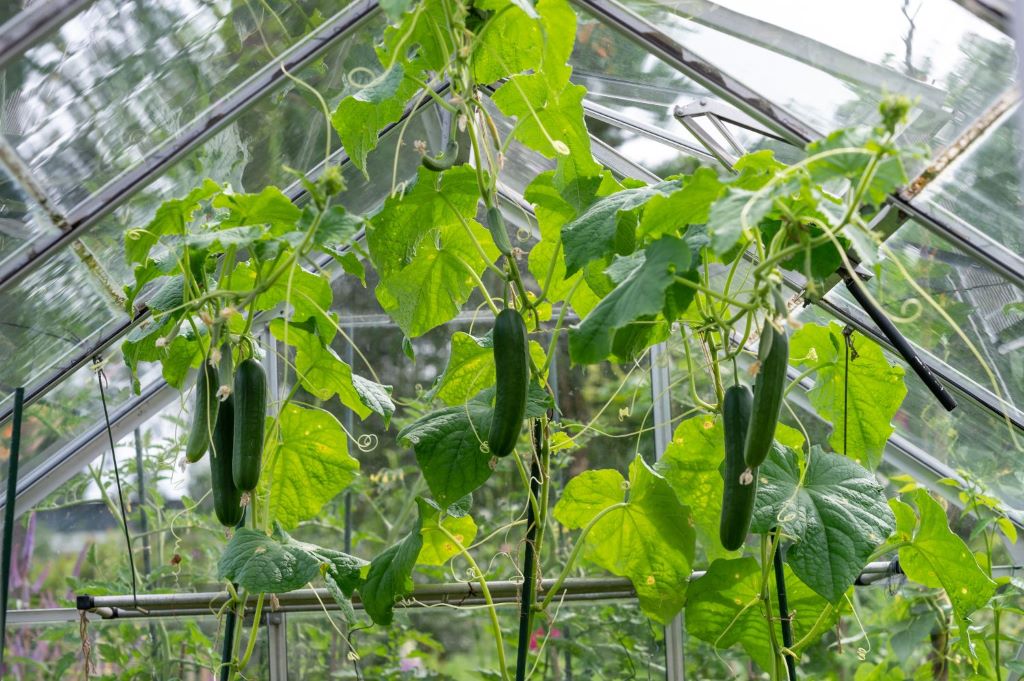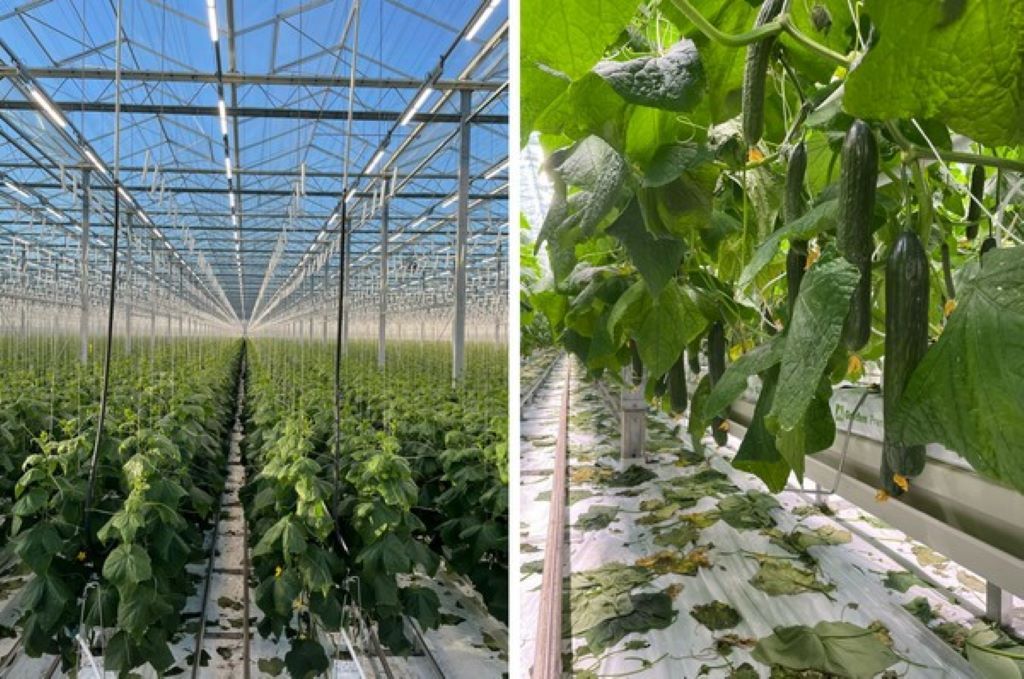
Cucumbers are a summertime favorite! Their refreshing flavor and crisp texture make them a staple in salads and snacks. While cucumbers thrive outdoors in warm weather, a greenhouse extends your growing season and offers more control for bountiful harvests. Here’s how to create a cucumber haven within your greenhouse.
Why Grow Cucumbers in a Greenhouse?
- Extended Season: Greenhouses protect cucumbers from frost, allowing for much earlier planting and later harvests.
- Consistent Environment: You control temperature, humidity, and watering, ensuring optimal growth conditions.
- Reduced Pests and Diseases: Greenhouse environments offer some protection from outdoor pests and diseases common to cucumbers.
Choose the Right Cucumber Variety
- Greenhouse/Parthenocarpic: These varieties are “self-fertile”, not requiring pollination. This is crucial since greenhouses often have fewer pollinators. Look for seed packets specifically labeled for greenhouse growing.
- Bush vs. Vining: Bush types stay compact, good for smaller spaces. Vining types climb, needing a trellis but producing higher yields.
- Flavor and Use: Consider pickling cucumbers for small, firm fruits, or slicing cucumbers for larger, sweet varieties.

Setting Up Your Greenhouse for Cucumbers
- Temperature: Cucumbers love warmth. Maintain a daytime temperature between 70-85°F (21-29°C) and a nighttime temperature above 65°F (18°C).
- Light: Maximize sun exposure; at least 6 hours of direct sunlight is ideal. Use supplemental grow lights if needed during shorter days.
- Humidity: While cucumbers like humidity, aim for a range of 60-80%. Excess humidity can promote disease, so ensure good ventilation.
Planting and Growing Your Cucumbers
- Seed Starting: Start seeds indoors 3-4 weeks before your last frost date. Plant in seed trays with a well-draining potting mix. Seeds germinate best around 75°F (24°C), so use a heat mat if needed.
- Transplanting: Plant seedlings when they have 2-3 true leaves, carefully spacing them according to your variety (usually 12-18 inches apart).
- Soil: Use fertile, well-draining soil with a pH between 6.0-6.8. Amend with compost or aged manure for added nutrients.
- Trellising: Support vining cucumbers with a trellis, strings, or netting. This improves airflow, fruit quality, and ease of harvest.
Care and Maintenance
- Watering: Keep the soil consistently moist, but not soggy. Drip irrigation is excellent for greenhouses, delivering water directly to roots.
- Fertilizing: Feed cucumbers a liquid fertilizer high in potassium every 2-3 weeks, especially during fruiting.
- Pruning: For vining types, prune off side shoots and suckers up to the first few fruit sets. This focuses the plant’s energy on production.
- Pollination (Optional): If your variety isn’t parthenocarpy, you may need to hand-pollinate. Use a small paintbrush to transfer pollen from male to female flowers.
Troubleshooting Common Problems
- Powdery mildew: A white, powdery substance on leaves. Improve air circulation and apply organic fungicides if needed.
- Aphids: Tiny, sap-sucking pests. Use insecticidal soap or introduce beneficial insects like ladybugs.
- Misshapen fruit: Often caused by inconsistent watering or pollination issues.
Harvest Time
- Pick cucumbers regularly when they reach their desired size. This encourages further production.
- Slicing cucumbers should be smooth and dark green.
- Pickling cucumbers are ready when smaller and firm.
Tips for Greenhouse Cucumber Success
- Monitor closely: The closed environment requires observing temperature, humidity, and plant health regularly.
- Companion planting: Utilize your space with compatible plants like basil, dill, or beans.
- Crop Rotation: Plant cucumbers in a different spot within the greenhouse each year to prevent soil-borne diseases.
Growing cucumbers in a greenhouse provides delicious rewards and is a fantastic way to leverage the structure you have. With a little knowledge and care, you’ll be enjoying fresh, homegrown cucumbers extended throughout the year!
